The lyrics of Les Acadiens by French singer Michel Fugain (Les Acadiens) run through my mind, “Y a dans le sud de la Louisiane / Et dans un coin du Canada / Des tas de gars, des tas de femmes / Qui chantent dans la même langue que toi. Tous les Acadiens, toutes les Acadiennes / Vont chanter, vont danser sur le violon / Sont Américains, elles sont Américaines / La faute à qui donc ? La faute à Napoléon…” (There is in southern Louisiana / And in a corner of Canada / A bunch of guys, a bunch of women / Who sing in the same language as you. All the Acadians, all the Acadians / Will sing, will dance to the violin / All Americans, they are American / Whose fault is it then? The fault of Napoleon…). There is music on every corner, great Cajun cuisine, shimmering houses and an undeniable nonchalance and joie de vivre: New Orleans or “Nola” (NO stands for New Orleans and LA for Louisiana) will stir up all your senses ! New Orleans is nicknamed the “Big Easy”. The city extends along a curve in the Mississippi River, between the bayous and Lake Pontchartrain. The curve gives it its other nickname, the “Crescent City”. New Orleans is mostly built below sea level and protected from flooding (in theory) by levee. It is the largest city in the Southern State of Louisiana and the metropolitan area had a population of 1,262,888 in 2015. The city has two main economic hubs: its port, one of the largest and busiest in the world, and tourism based on its rich, old and vibrant culture and round-the-clock nightlife. New Orleans was founded by Jean-Baptiste Le Moine, Sieur de Bienville, in 1718, and named after the then regent, Philip II, Duke of Orleans. The city was French became Spanish after the Treaty of Fontainebleau in 1762 and again French under the Treaty of IIdefonso of 1800. In 1804, Napoleon Bonaparte sold New Orleans and all the rest of Louisiana to the United States. The melting pot of peoples and cultures – Spaniards, Cajuns (or Acadians, immigrants from French Canada) and Caribbean Creoles (especially from Haiti) – have shaped this colorful, lively, noisy, bewitching city, and its distinctive variety of Louisiana voodoo.

The “Natchez” offers cruises on the Mississippi River
All tourist attractions in New Orleans are within easy walking distance from each other, which is significant or not depending upon your point of view. Like the Princess Tania, but without the frog, I like to stretch my legs in the Garden District, a kind of life-size Disney park accessible by the Saint Charles Streetcar, a charming streetcar made famous by American playwright Tennessee Williams’ play “A Streetcar Named Desire” (1947)… and especially by its adaptation as a film in 1951, starring an, at the time, unknown Marlon Brando who subsequently became a major Hollywood movie star. The film gave him his first Academy Award nomination for best actor. The streetcar runs through the entire Garden District from Jackson Square to Audubon Park. The Garden District, especially along Saint Charles Avenue, is well-known for its beautiful, large antebellum houses. The area has an abundance of unique architectural styles, including Greek revival, American colonial, and Victorian style. The Nolan House stands on Coliseum, a street that served as the backdrop for the 2008 romantic fantasy drama film “The Curious Case of Benjamin Button” starring Brad Pitt (along with the “Brangelina” of that great era !). Ladies in Red another streetcar line runs along the banks of the Mississippi River. A great walk is along the boardwalk running through Woldenberg Park near the Mississippi River. From the boardwalk, you can see the steamboat “Natchez“, churning the brownish water with its huge paddle wheel. The boat, named for the city of Natchez in Mississippi, offers cruises on this mythical river, also the setting for “The Adventures of Hunckleberry Finn” by Mark Twain, first published in the United Kingdom in 1884. But let’s leave the banks of the Mississippi and turn to Jackson Square, the historic and tourist center of the city. In this magnificent park stands the equestrian statue of Andrew Jackson who struggled victoriously against the English in 1814. Musicians play while painters at their easel create new art for tourists. Around the park, the atmosphere is lively and relaxed: jugglers, fortune-tellers, caricaturists, not to mention portraitists who hang their works at the park’s gates. At Jackson Square, you cannot miss the symbol of New Orleans, the Saint-Louis Cathedral or Saint-Louis-Roi-de-France Basilica. It is immaculate in white with restrained lines and characterized by three pointed towers, which dominate the Vieux Carré or Carré Français (French Quarter). Pope Paul VI granted the cathedral the status of a minor basilica in 1964 and Pope John Paul II celebrated a mass there during his 1987 visit. Inside, the rather sober decoration is reminiscent of some churches in France… Yes, you are not dreaming, several flags hang along the nave. The decorations on the ceiling and other murals are very beautiful and the stained glass windows tell the story of Saint Louis, King of France, and his participation in the Crusades. Just to the right of the Saint-Louis Cathedral and facing the northwest side of Jackson Square stands The Presbytère built in 1813 and one of the Nation’s best examples of formal colonial Spanish architecture, including neo-renaissance elements. Originally, it was called the Casa Curial because it was built on the site of the former residence of Capuchin Monks and the presbytery. It housed the bishops of Louisiana and later the Louisiana Supreme Court. In 1911, it became part of the Louisiana State Museum, and displays a collection devoted to Mardi Gras and Carnival, an important institution in New Orleans! In 1970, it was designated a National Historical Landmark.

Jackson Square
Small bands of musicians and singers provide atmosphere… couples dance in the middle of the street, costumed people wander the streets, a march fanfare sounds ! The French Quarter is the most festive place in New Orleans: music and partying around the clock. It displays an atmosphere of madness, creativity and a certain authenticity! Here, everyone listens to or plays pretty much the same music, a bewitching Cajun swing in a “Two-step” or “zydeco” tempo. The American band L’Angelus (swingue cajun) emphasizes its Louisiana roots and performs a mixture of Cajun fiddle tunes, swing saxophone driven swamp pop and New Orleans R&B. If you want to enrich your musical universe and discover new bands check out the Cajun dance party “Fais Do-do” and look for posters or read ads in the “Times of Acadiana“, a free weekly, which publishes the most complete list of cultural events. You will have an amazing choice of events. As one can say in Cajun, it is impossible to “stand like a lantern post” (lack of energy). Full of good humor, a singer asks a group of passers-by to enter a “booty shake” contest ! When I understood what it was about, I preferred discretely disappear, but a lady in mini skirt went all out to master this art… shaking and twisting her butt in a trance-like state… like a “Grand Beedé has got the cabris” (a Cajun expression for a clumsy man with something stuck between its buttock), of course generating the hilarity among the onlookers… Your ears are now well-sharpened ? So let’s continue our visit and awaken your other senses !
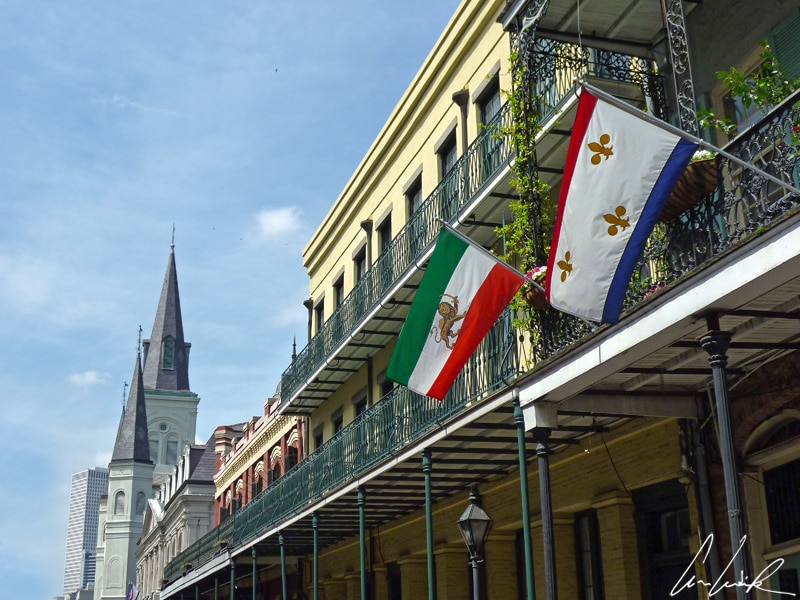
The historic heart of New Orleans
Let’s start with the sense of sight. Houses with iron lace balconies and luxuriant vegetation give charm to the French Quarter, which is known as “the Quarter” or “Carré” and limited by the Mississippi River, Rampart Street, Canal Street, and Esplanade Avenue. It is the historic heart of New Orleans and charms in French, Spanish and Creole. Streets have French names like Bourbon, Chartres, Orleans, Toulouse, Bienville and Royal. As you walk you feel transported back in time to the city’s cultural roots. On Chartres Street, discover the Beauregard-Keyes House, where two prominent people lived. First, P. G. T. Beauregard, a military officer, a key actor in the outbreak of the Civil War, lived in this house from 1865 to 1869. Second, the American novelist Frances Parkinson Keyes, unfortunately not well-known among French speakers, bought the ruined building in the 1940s and lived in it, haunted by memory of Beauregard, between 1945 and 1970. The visit of this historic house is a curious and penetrating journey in time, far from the flashy tourist attractions of the so-called “haunted” houses of the district. Just one block over from Bourbon Street is Royal Street, an eye-pleasing mix of old buildings transformed into arts galleries, antique shops, and boutiques. Here stands the famous Gallier House that served as the setting for “Interview with a Vampire” a 1994 American drama horror film starring Brad Pitt. Further on Merieult House is the oldest private house on Royal Street, and LaBranche House is famous for its elaborate rounded cast-iron galleries decorated with leaves of oak. Further on we pass Seignouret House, Auguste Coudreau Mansion etc. The French Quarter is full of colorful houses decorated with elegant balconies of chiseled cast-iron lace and overflowing with ferns in pots and flowers. I almost expect to see Dwayne Cassius Pride, the NCIS special agent nicknamed “King” in the television series NCIS: New Orleans, waving from a balcony… Hey, hi Christopher and Brody, how are you ? In the quiet adjacent streets, each house has its own character, pink and white facades and a halo of that incredible iron lace. Sublime ! Conscious of the heritage and tourist interest of the district, the city of New Orleans has designated the whole French Quarter as a National Historic Landmark. The buildings must be preserved and new construction must conform to the style of the older buildings… Bourbon Street presents a different side depending on whether you browse during daytime or nighttime. This very tourist street becomes a long row of bars, boasting their exclusive “explosive” cocktails: the “Hurricane”, the “Hand Grenade”, the “Resurrection”, etc., and strip clubs of questionable taste, with ushers who do everything to lure you in !

Elegant balconies of chiseled cast-iron lace and overflowing with ferns in pots and flowers.
In the French Quarter, the French Market is the oldest market in the United States, and where people arriving by boat went for their first meal. It spans 6 blocks of shops, sand colorful stands offering of all kinds of products. The sportswear shop near the ever-crowded and touristic Café du Monde, known for beignets and café au lait, is one of the few places where one can buy official products (tee- Shirts…) of the “Saints” football team bearing their famous fleur-de-lys logo ! In the past, merchants of all kinds used to sell their products on the market, but even if it has gradually turned to tourism, you can still find fruits, vegetables and spices… and magnificent carnival masks. This place will undoubtedly sharpen your sense of smell and taste ! Now it’s time for a “gumbo”, a soup flavored with shrimp, crab and sometimes fish and spices and accompanied by rice and beans. You can also taste the renowned “jambalaya”, a kind of paella. But if you opt for a jambalaya, you face a difficult choice between a Cajun jambalaya and a Creole jambalaya. That’s the question ? Both are based on rice, but the Creole version includes tomatoes, meat and chicken broth. The Cajun version has neither tomato nor chicken broth, but beef, tabasco and chili. I will order “Oysters Bienville”, oysters cooked in their shells and accompanied by a creamy shrimp and mushrooms sauce… For a sweet ending, but also for the show provided, I cannot resist “Banana Fosters”. Just imagine a waiter coming towards you with a pan full of bananas cut into rings and flaming with a preparation of rum and cinnamon… a real pyrotechnic show ! After this memorable course, I go for another spectacle, a “café brulôt”. This is very strong coffee with orange lemon and cinnamon flaming with brandy ! “Il suffira d’une étincelle / Oui, d’un rien, oui, d’un geste / Il suffira d’une étincelle / Et d’un mot d’amour, oui pour / Allumer le feu, allumer le feu / Et voir grandir la flamme dans vos yeux” translated as “Just a spark / Yes of nothing, just a gesture / Just a spark / And a word of love, yes to / Light the fire, light the fire / And to see it to grow before our eyes” by French singer Johnny Hallyday – Light the Fire ! And if you still doubt the excellence of the food, then refer to the Cajun proverb which says, “A good cook must know how to accommodate everything, even the skunk“… Good appetite ! If you like lunch breaks on the run, then you cannot escape the famous New Orleans sandwich: the Po’Boy (or poor boy) which is sold everywhere with all kinds of toppings, including oysters ! The true po’boy of Louisiana must respect three strict rules:
- It is served on a baguette-like New Orleans French bread soaked in sauce
- The filling overflows the sandwich with a choice of accompaniments including shrimp, oysters or crayfish (all fried in oil of course!) and roast beef… If you ask for it “dressed”, then it will be served seasoned with mayonnaise, slices of tomato and pickles. For sure, as the Cajuns say, I will eat it “on the tip of my teeth”
- After a Po’boy there is no room for dessert… anything else would really be surprising !
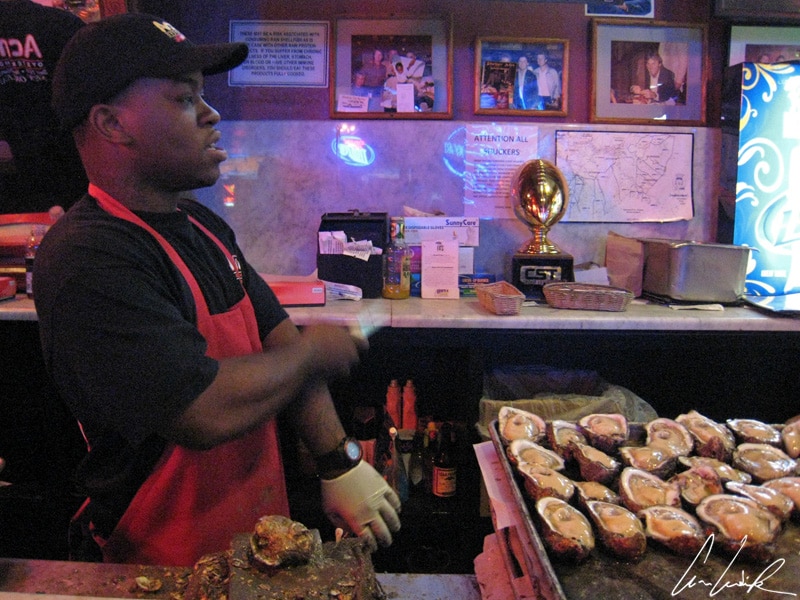
Des “Oysters Bienville”
New Orleans, with its surprising cross-cultural heritage and human richness, is a unique and magical city. The birthplace of Jazz, the city seduces jazz and history enthusiasts. It has seen the birth of great musicians such as Louis Armstrong and Sidney Bechet. It is lively, noisy, and has an enchanting and unaltered charm. It would take a long time to discover all its secrets. Its historical heritage and joie de vivre survive despite devastating events such as the oil spill in 2010 and Hurricane Katrina, which in 2005 devastated a large part of its popular neighborhoods. Even today, more than 10 years after Hurricane Katrina, an atmosphere of desolation persists in some districts. The American mystery writer James Lee Burke expressed his anger at the mismanagement of the reconstruction after hurricane Katrina in his 2008 thriller “Swan Peak”. He wrote, “They won’t rebuild the place I grew up in. They don’t know how to. They weren’t there. Back then every day was a party. I don’t mean horns blowing and people getting drunk on their balconies.” The population has risen painfully, but courageously, from the abyss of this disaster. However, if you want to dig deeper into the difficulties encountered by the locals, I highly recommend “Binge watching” the four seasons and 36 episodes of the HBO drama series “Treme.” The series takes its name from Tremé, a neighborhood in New Orleans. It begins in 2005 only three months after Hurricane Katrina as the residents try to rebuild their lives, their homes, and their unique culture in the aftermath of the storm. The series shows the difficulties encountered including the chaos in the educational, judicial and penitentiary system due to the flooding of nearly 80% of the city. It also addresses the slowness of insurance companies to compensate their customers, and the problem of relocations… One could conclude in Cajun that the insurance companies and promoters have “mis de la boucane en sac” (put some smoke in the bag). They had grandiose and impossible projects, but as usual “ils détellent la charrue au milieu du marais” (they unhitch the plow in the middle of the swamp) meaning they never finish anything…
As for me, “ben, faut je m’en va“ (gotta go), and “soignez vous-autres“ (Y’all take care) !
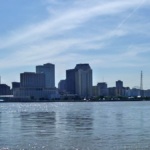

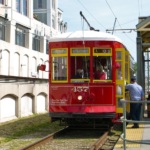

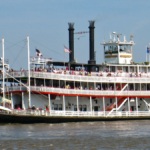
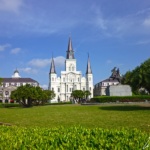
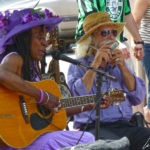
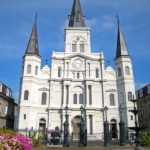
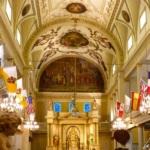
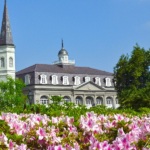
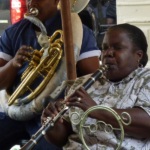
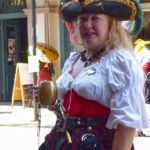
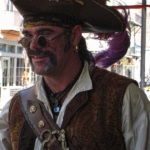
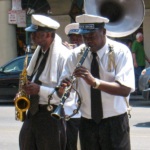
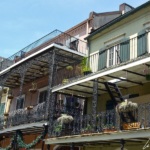
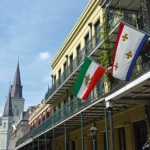
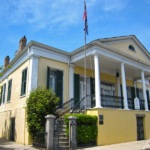
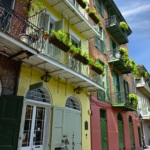
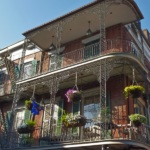
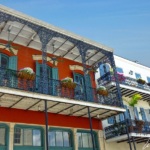
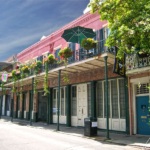
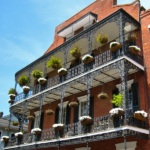

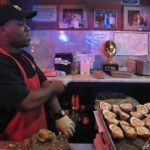


Its impossible to not fall in love with NOLA, she is such a show girl after all:-) I need to pen my post on our Mardi gras experience soon. So glad to see that you had a great time too!
I fully agree with you 😉 I had a look at your articles “Decoding Mardi Gras. People & Parades”. Lovely pictures ! hope I can see Mardi Gras in New Orleans one day 🙂
This is amazing. I’ve never been to New Orleans, but now I feel like I have been. Thank you!
This was my first time to New Orleans. The thing I instantly realized about New Orleans is this is a city that doesn’t fake it. The people here are real. The buildings are not created to be something they are not. The food embraces its roots. This city embraces its grit and I love it 🙂
New Orleans is one of the places in the US I want to visit the most! I hope I can hit it soon! Your post definitely makes me want to go a lot more! Thanks for such a cool post in which you actually make a picture of the spirit of the city!
New Orleans is a city with soul 😉 One of my favorite things to do was simply wander the streets. I was always pleasantly surprised at people’s hospitality in the Southern US, always greeting you when you walk by, smiling, and calling you Mam !
This is such a complete and well-written review, fantastic! Lovely photos too.
Thank you 🙂 New Orleans is filled with Cajun food, live jazz, street performers, and an appreciation for all the temptations of life !
I LOVE New Orleans! I went for a bachelorette party, so as you can imagine, we had a great time on a Bourbon street! I want to visit again and see more of the city and experience the food scene! Keeping this post to refer to later!
I loved this city. The French Quarter is amazing, but there are also many other areas to visit and fall in love with. It is a great place to see the many different influences that have made up what is now the USA thanks to the different colonial powers that have had a presence here.
Wow what a super helpful post full of good information! Next time I’m in America I hope to go to New Orleans and this just confirms that. Looks amazing
Thank you 🙂 I really loved New Orleans and would go back again… But likely not before visiting some of my other must-visit spots 😉 New Orleans is full of so many amazing places to see, great people to meet, delicious food to eat etc. so see it by yourself at least once !
I’ve been just absolutely dying to visit New Orleans… Of all the countries I’ve visited I have yet to cross of New Orleans as the number one bucket list item of my home country! The food, the rich culture… It’s everything I love!! You’re making me want to visit even more! 🙂
New Orleans is so many amazing things at once. Old and new. Elegant and bawdy. Urban and tropical. Loud, and yet also beautifully and peacefully silent. There is sadness, but also so much humor ! And there is a heat that flows through, swirling around and pulling you along, encouraging you to taste and experience as much as you can. It’s lusty. It’s indulgent.
Just got back from my first trip to NOLA and loved it! And you’re so right about the po’ boys — no room for dessert (or even dinner, if you had one for lunch). Great post!
New Orleans may be the city that has the best food in the United States. I’m talking about good old-fashioned food that has been around forever and is still done the best in the Crescent City. You just can’t leave the city until you’ve had a po’boy, gumbo, Oysters Rockefeller, and the world famous beignets. The hard part is having enough time to try all the fabulous foods New Orleans has to offer without gaining 50 pounds 😉
New Orleans is so amazing. Was there for four days a few years ago and fell in love. I think it’s the only city I could live in in the States besides New York! Excellent job capturing its unique atmosphere!
New Orleans is a city with soul. It’s seen some hard times, but it lives on with a zest for life unmatched by most places. The energy, food, and music scene make New Orleans one of the most eclectic and vibrant cities in the United States.
I’m dying to explore NoLa! Tons of my friends have been visiting it lately and coming back with the most amazing stories. This is a great guide ÷
New Orleans is filled with scrumptious French-inspired Creole and Cajun food, live jazz, street performers, and an appreciation for all the temptations of life. Life is lived well here in the Big Easy.
This looks like fun place to visit! And I’d love to try Po’boy 😀
New Orleans is an amazing city. Life is lived well here in the Big Easy !
I loved New Orleans when I visited. Its a great city. I did a few free walking tours to get to know the city and also listened to live music in the evenings! I tried so many different foods too. I would love to go back and visit again, still so much I could see there.
Just a walk around the vibrant French Quarter… I really love looking at all the historic architecture, plant filled balconies, and tiny charming alleys 😉 From street bands to jazz halls, New Orleans has music in its DNA. End each day by listening to New Orleans’s incredible music scene on Frenchman Street, which is famous for its collection of jazz bars !
I’d love to try an authentic po’boy one day! And “to stand like a lantern post” is such a good analogy – I think I’m going to start using it!
You can find great po’boys all over Louisiana, but each November in New Orleans, the Oak Street Po’Boy Festival serves more varieties than you can possibly imagine 🙂 You will “pass a good time” in French cajun (which means to have a good time).
Hi, Very nice post, you shared a very nice information.
Thank you 🙂